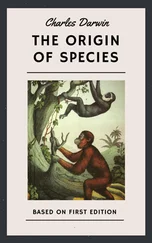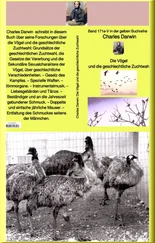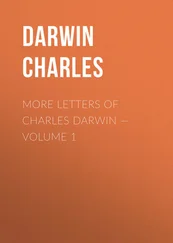Charles Darwin - Insectivorous Plants
Здесь есть возможность читать онлайн «Charles Darwin - Insectivorous Plants» — ознакомительный отрывок электронной книги совершенно бесплатно, а после прочтения отрывка купить полную версию. В некоторых случаях можно слушать аудио, скачать через торрент в формате fb2 и присутствует краткое содержание. Жанр: foreign_antique, foreign_prose, на английском языке. Описание произведения, (предисловие) а так же отзывы посетителей доступны на портале библиотеки ЛибКат.
- Название:Insectivorous Plants
- Автор:
- Жанр:
- Год:неизвестен
- ISBN:нет данных
- Рейтинг книги:5 / 5. Голосов: 1
-
Избранное:Добавить в избранное
- Отзывы:
-
Ваша оценка:
- 100
- 1
- 2
- 3
- 4
- 5
Insectivorous Plants: краткое содержание, описание и аннотация
Предлагаем к чтению аннотацию, описание, краткое содержание или предисловие (зависит от того, что написал сам автор книги «Insectivorous Plants»). Если вы не нашли необходимую информацию о книге — напишите в комментариях, мы постараемся отыскать её.
Insectivorous Plants — читать онлайн ознакомительный отрывок
Ниже представлен текст книги, разбитый по страницам. Система сохранения места последней прочитанной страницы, позволяет с удобством читать онлайн бесплатно книгу «Insectivorous Plants», без необходимости каждый раз заново искать на чём Вы остановились. Поставьте закладку, и сможете в любой момент перейти на страницу, на которой закончили чтение.
Интервал:
Закладка:
On three other occasions eight leaves were strongly excited with albumen moistened with saliva; they were then cut off, and allowed to soak for several hours or for a whole day in a few drops of glycerine. Some of this extract was added to a little hydrochloric acid of various strengths (generally one to 400 of water), and minute cubes of albumen were placed in the mixture. 21 21 As a control experiment bits of albumen were placed in the same glycerine with hydrochloric acid of the same strength; and the albumen, as might have been expected, was not in the least affected after two days.
In two of these trials the cubes were not in the least acted on; but in the third the experiment was successful. For in a vessel containing two cubes, both were reduced in size in 3 hrs.; and after 24 hrs. mere streaks of undissolved albumen were left. In a second vessel, containing two minute ragged bits of albumen, both were likewise reduced in size in 3 hrs., and after 24 hrs. completely disappeared. I then added a little weak hydrochloric acid to both vessels, and placed fresh cubes of albumen in them; but these were not acted on. This latter fact is intelligible according to the high authority of Schiff, 22 22 'Leons phys. de la Digestion,' 1867, tom. ii. pp. 114-126.
who has demonstrated, as he believes, in opposition to the view held by some physiologists, that a certain small amount of pepsin is destroyed during the act of digestion. So that if my solution contained, as is probable, an extremely small amount of the ferment, this would have been consumed by the dissolution of the cubes of albumen first given; none being left when the hydrochloric acid was added. The destruction of the ferment during the process of digestion, or its absorption after the albumen had been converted into a peptone, will also account for only one out of the three latter sets of experiments having been successful.
Digestion of Roast Meat. – Cubes of about 1/20 of an inch (1.27 mm.) of moderately roasted meat were placed on five leaves which became in 12 hrs. closely inflected. After 48 hrs. I gently opened one leaf, and the meat now consisted of a minute central sphere, partially digested and surrounded by a thick envelope of transparent viscid fluid. The whole, without being much disturbed, was removed and placed under the microscope. In the central part the transverse striae on the muscular fibres were quite distinct; and it was interesting to observe how gradually they disappeared, when the same fibre was traced into the surrounding fluid. They disappeared by the striae being replaced by transverse lines formed of excessively minute dark points, which towards the exterior could be seen only under a very high power; and ultimately these points were lost. When I made these observations, I had not read Schiff's account 23 23 'Leons phys. de la Digestion,' tom. ii. p. 145.
of the digestion of meat by gastric juice, and I did not understand the meaning of the dark points. But this is explained in the following statement, and we further see how closely similar is the process of digestion by gastric juice and by the secretion of Drosera.
["On a dit le suc gastrique faisait perdre la fibre musculaire ses stries transversales. Ainsi nonce, cette proposition pourrait donner lieu une quivoque, car ce qui se perd, ce n'est que l'aspect extrieur de la striature et non les lments anatomiques qui la composent. On sait que les stries qui donnent un aspect si caractristique la fibre musculaire, sont le rsultat de la juxtaposition et du paralllisme des corpuscules lmentaires, placs, distances gales, dans l'intrieur des fibrilles contigus. Or, ds que le tissu connectif qui relie entre elles les fibrilles lmentaires vient se gonfler et se dissoudre, et que les fibrilles elles-mmes se dissocient, ce paralllisme est dtruit et avec lui l'aspect, le phnomne optique des stries. Si, aprs la dsagrgation des fibres, on examine au microscope les fibrilles lmentaires, on distingue encore trs-nettement leur intrieur les corpuscules, et on continue les voir, de plus en plus ples, jusqu'au moment o les fibrilles elles-mmes se liqufient et disparaissent dans le suc gastrique. Ce qui constitue la striature, proprement parler, n'est donc pas dtruit, avant la liqufaction de la fibre charnue elle-mme."]
In the viscid fluid surrounding the central sphere of undigested meat there were globules of fat and little bits of fibro-elastic tissue; neither of which were in the least digested. There were also little free parallelograms of yellowish, highly translucent matter. Schiff, in speaking of the digestion of meat by gastric juice, alludes to such parallelograms, and says: —
["Le gonflement par lequel commence la digestion de la viande, rsulte de l'action du suc gastrique acide sur le tissu connectif qui se dissout d'abord, et qui, par sa liqufaction, dsagrge les fibrilles. Celles-ci se dissolvent ensuite en grande partie, mais, avant de passer l'tat liquide, elles tendent se briser en petits fragments transversaux. Les 'sarcous elements' de Bowman, qui ne sont autre chose que les produits de cette division transversale des fibrilles lmentaires, peuvent tre prpars et isols l'aide du suc gastrique, pourvu qu'on n'attend pas jusqu' la liqufaction complte du muscle."]
After an interval of 72 hrs., from the time when the five cubes were placed on the leaves, I opened the four remaining ones. On two nothing could be seen but little masses of transparent viscid fluid; but when these were examined under a high power, fat-globules, bits of fibro-elastic tissue, and some few parallelograms of sarcous matter, could be distinguished, but not a vestige of transverse striae. On the other two leaves there were minute spheres of only partially digested meat in the centre of much transparent fluid.
Fibrin. – Bits of fibrin were left in water during four days, whilst the following experiments were tried, but they were not in the least acted on. The fibrin which I first used was not pure, and included dark particles: it had either not been well prepared or had subsequently undergone some change. Thin portions, about 1/10 of an inch square, were placed on several leaves, and though the fibrin was soon liquefied, the whole was never dissolved. Smaller particles were then placed on four leaves, and minute drops of hydrochloric acid (one part to 437 of water) were added; this seemed to hasten the process of digestion, for on one leaf all was liquified and absorbed after 20 hrs.; but on the three other leaves some undissolved residue was left after 48 hrs. It is remarkable that in all the above and following experiments, as well as when much larger bits of fibrin were used, the leaves were very little excited; and it was sometimes necessary to add a little saliva to induce complete inflection. The leaves, moreover, began to re-expand after only 48 hrs., whereas they would have remained inflected for a much longer time had insects, meat, cartilage, albumen, &c., been placed on them.
I then tried some pure white fibrin, sent me by Dr. Burdon Sanderson.
[Experiment 1. – Two particles, barely 1/20 of an inch (1.27 mm.) square, were placed on opposite sides of the same leaf. One of these did not excite the surrounding tentacles, and the gland on which it rested soon dried. The other particle caused a few of the short adjoining tentacles to be inflected, the more distant ones not being affected. After 24 hrs. both were almost, and after 72 hrs. completely, dissolved.
Experiment 2. – The same experiment with the same result, only one of the two bits of fibrin exciting the short surrounding tentacles. This bit was so slowly acted on that after a day I pushed it on to some fresh glands. In three days from the time when it was first placed on the leaf it was completely dissolved.
Experiment 3. – Bits of fibrin of about the same size as before were placed on the discs of two leaves; these caused very little inflection in 23 hrs., but after 48 hrs. both were well clasped by the surrounding short tentacles, and after an additional 24 hrs. were completely dissolved. On the disc of one of these leaves much clear acid fluid was left.
Читать дальшеИнтервал:
Закладка:
Похожие книги на «Insectivorous Plants»
Представляем Вашему вниманию похожие книги на «Insectivorous Plants» списком для выбора. Мы отобрали схожую по названию и смыслу литературу в надежде предоставить читателям больше вариантов отыскать новые, интересные, ещё непрочитанные произведения.
Обсуждение, отзывы о книге «Insectivorous Plants» и просто собственные мнения читателей. Оставьте ваши комментарии, напишите, что Вы думаете о произведении, его смысле или главных героях. Укажите что конкретно понравилось, а что нет, и почему Вы так считаете.












